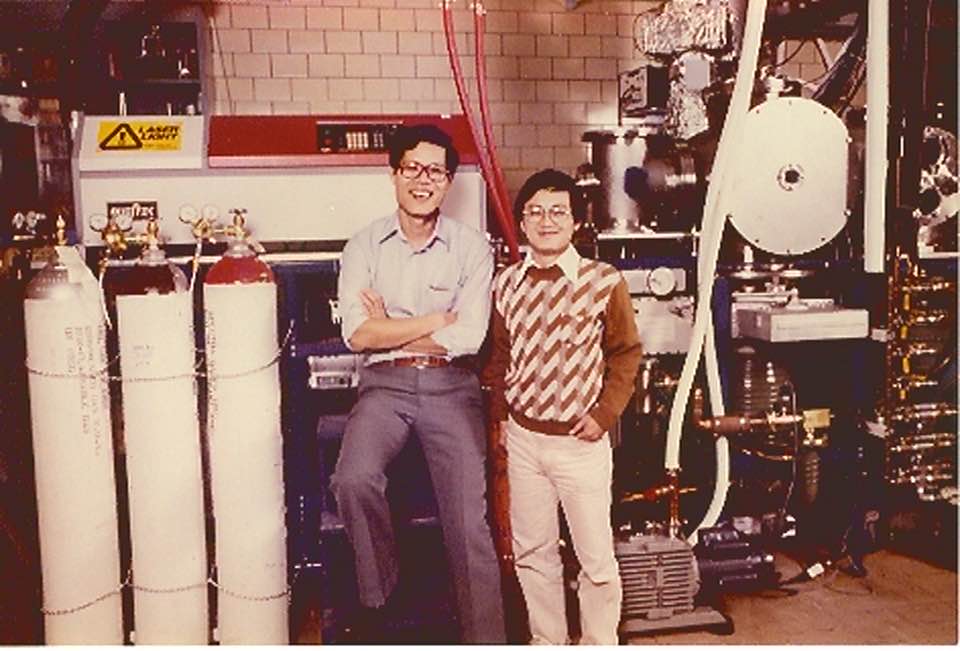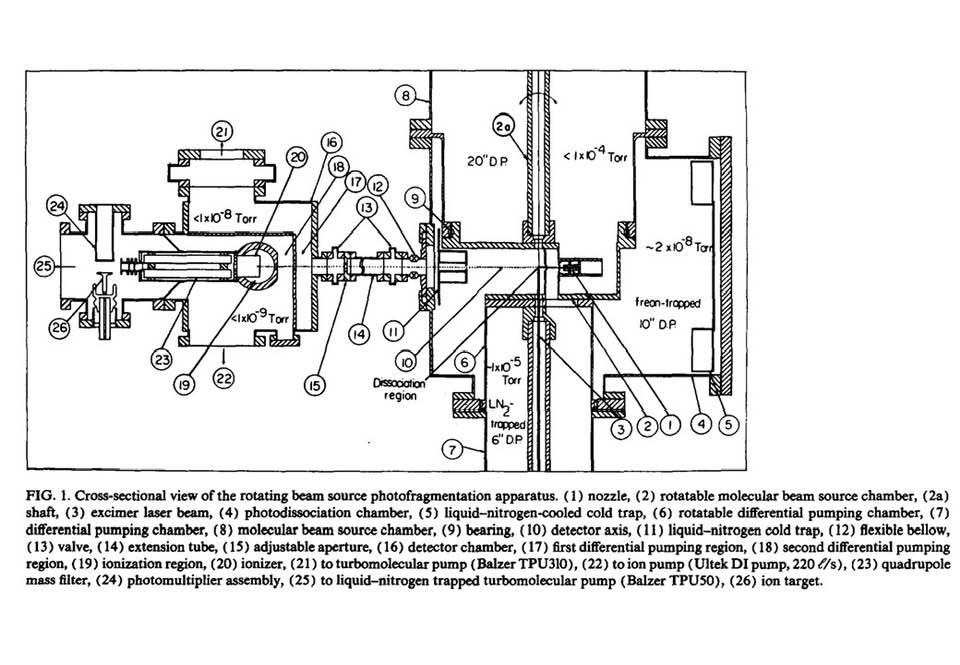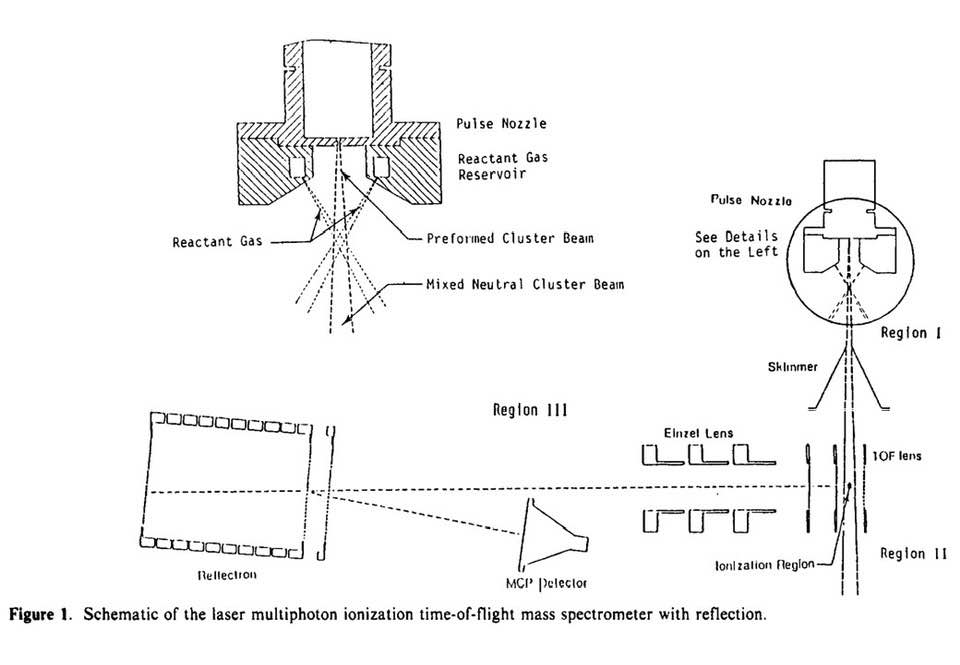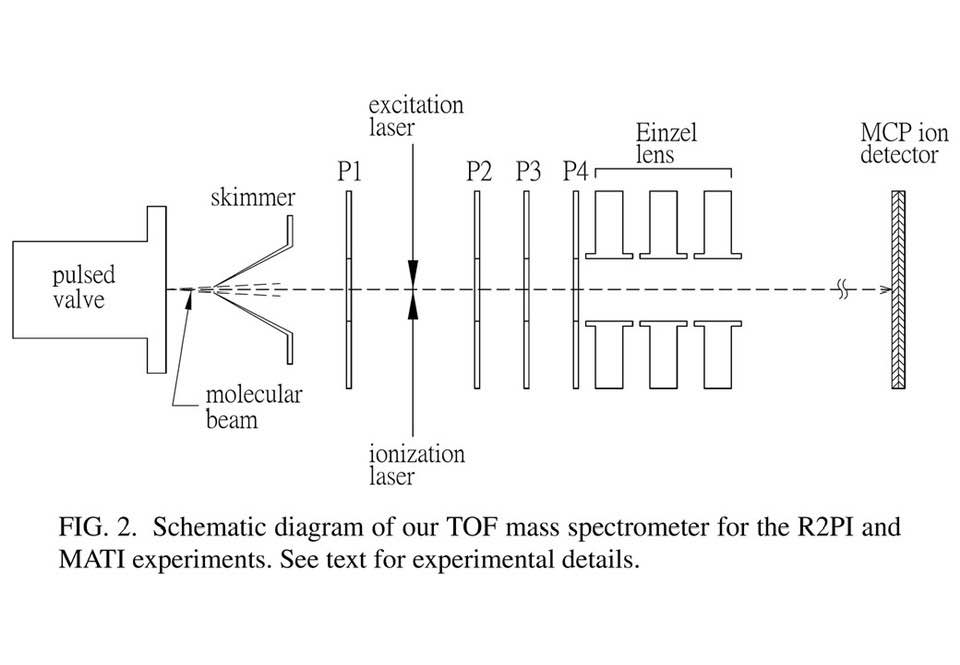
The three mentors who influenced me most
Looking back on my life, most of my days have been spent dealing with tiny, invisible atoms and molecules. I have been very lucky to work in this research field to appreciate the beauty of God’s creation. Here, I would like to thank my mentors for their guidance.
The first one I like to thank is Professor Roland M. Marcotte of Texas A&M University. Since I was a child, I have loved to explore the truth. After graduating from Fu-Jen Catholic University in Taiwan, I went to the United States for further studies. During my master's study period, I used a commercial tandem mass spectrometer to analyze the products of ion-molecule reactions under the guidance of Professor Marcotte. Although the tandem mass spectrometer is suitable for these research subjects, many experiments cannot be carried out due to the limitations of this commercial instrument. At the time, if we wanted to break through the limitations and conduct more advanced research, we must design and manufacture sophisticated scientific research instruments by ourselves. Therefore, I continued further graduate study.
The second person I would like to thank is Dr. Cheuk-Yiu Ng, the supervisor of my doctoral career at Iowa State University. Dr. Ng opened up my passion for research and provided me with opportunities and sufficient research funding, allowing me to devote myself to the study of atoms and molecules. In Dr. Ng's laboratory, I drew the design diagram of mechanical components, and learned the basic skills of making precision instruments, and then designed and built a molecular beam laser photofragment time-of-flight mass spectrometer. This self-designed instrument has the following special functions: 1. It can precisely set the angle of the relative direction of the molecular beam and ion flight through the computer; 2. The length of the flight tube for detecting molecular fragments can be adjusted according to the needs of the experiment. At the time, it was one of the most advanced instruments for investigating the photodissociation dynamics of molecules and molecular complexes.
In addition to the research guidance, Dr. Ng has two sentences that have greatly influence on me. His first sentence is: (1) be energetic every day, be full of enthusiasm for research, and be bold and careful in doing things; (2) How is the research today? What have you learned? Scientific research is a challenging road, and many difficulties must be solved. Dr. Ng's two sentences are like treasures, allowing me to overcome various difficulties and challenges I have experienced in my long scientific research career.
After obtaining my Ph.D., I went further to do postdoctoral research at Pennsylvania State University. The third person I would like to thank was Professor Albert Welford Castleman Jr., the laboratory director at that time. He trusted me and provided moderate research funding, allowing me to rebuild the existing vacuum chamber and design and build a pulsed molecular beam multiphoton ionization reflectron time-of-flight mass spectrometer to explore photoabsorption and photodissociation of molecular clusters.
During more than ten years in the United States, I have had solid training in academic research and experimental technology. After returning to Taiwan, I am very happy to continue my love of atomic and molecular research at the Institute of Atomic and Molecular Sciences, Academia Sinica. I designed and built a pulsed molecular beam two-color resonance-multiphoton mass-analyzed threshold ionization spectrometer as the primary tool for exploring photophysics and photochemistry. The main molecular systems include isomers of (1) multiply substituted benzene derivatives and (2) sandwich-type organometallic complexes. The experimentally measured physical quantities and spectra provide information about the vibrations of molecules in electronically excited states and ion states - a beautiful gesture.
I would like to thank Dr. Cheuk-Yiu Ng in particular. Dr. Ng is my mentor and treats me like his family member. He invited me to dine with his family many times, and also invited our whole family to stay in his home. As my daughter, Joyce, studied at the University of California, Davis, Dr. Ng’s care never stopped until she successfully completed her master's degree.With this article, I thank my three academic mentors.
 |
| Cheuk-Yiu Ng & Wen-Bih Tzeng, 117 Metallurgy, Ames Lab, Iowa State University, 1986 |
 |
|
A 193 nm laser
photofragmentation time-of-flight mass spectrometric study of CS2
and CS2 clusters, W. B. Tzeng, H. M. Yin, W. Y. Leung, J. Y. Luo, S. Nourbakhsh, G. D. Flesch, and C. Y. Ng, J. Chem. Phys. 88, 1658-1669 (1988). |
 |
|
Ammonia-acetone mixed
clusters: Internal ion-molecule reactions, structure and bonding, W. B. Tzeng, S. Wei, D. W. Neyer, R. G. Keesee, and A. W. Castleman, Jr., J. Am. Chem. Soc. 112, 4097-4104 (1990). |
 |
|
Identification of four rotamers of m-methoxystyrene by resonant
two-photon ionization and mass-analyzed threshold ionization
spectroscopy, Y. Xu, S.Y. Tzeng, V. Shivatare, K. Takahashi, B. Zhang, and W. B. Tzeng, J. Chem. Phys. 142, 124314 (2015). [9 pages] |